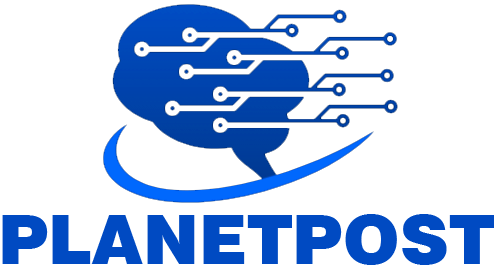Organizations are under constant pressure to innovate. Embracing innovation allows companies to develop new products, services, and processes, crucial for maintaining a competitive edge. As companies strive to meet the demands of their customers and anticipate industry disruptions, embracing GenAI and hyperautomation becomes imperative for maintaining relevance and achieving sustainable growth in this dynamic business environment.
The benefits of hyperautomation
Hyperautomation integrates various technologies, including Artificial Intelligence (AI), Machine Learning (ML), event-driven software architecture, low-code no-code (LCNC), Intelligent Business Process Management Suites (iBPMS), and Conversational AI to streamline and automate diverse business processes. The hyperautomation market is currently valued at approximately USD 12.95 billion, and it is to expected grow to USD 31.95 billion by 2029. A key catalyst behind this growth is the widespread adoption of digitalization on a global scale.
For instance, Robotic Process Automation employs software “bots” or “robots” to automate repetitive tasks, ideal for those following predictable patterns without the need for complex decision-making. One notable application is the processing of invoices, where hyperautomation can efficiently validate invoice details, cross-reference records, and identify discrepancies. The benefits of hyperautomation include cost reduction, increased productivity, early revenue recognition, and the ability for organizations to use data from digitized processes.
It can thus take on complex decision-making processes, empowering organizations to streamline operations and drive efficiency across various sectors. Leveraging a no-code platform can help companies reduce their overall timelines by up to 60 to 70 percent.
The rise of GenAI
GenAI is revolutionizing the operational landscape by seamlessly integrating intelligence into automated processes. With the market poised to reach USD 1.3 trillion within the next decade, GenAI’s transformative impact is undeniable. Its capabilities in content generation, pattern recognition, natural language comprehension, continual learning, and data analysis are driving innovation and efficiency across diverse sectors.
According to McKinsey’s “The State of AI in 2023: Generative AI’s Breakout Year” report, approximately one-quarter of C-suite executives surveyed use GenAI tools in their roles. Moreover, around 40 percent of respondents intend to boost their AI investments owing to GenAI advancements.
The survey found that organizations already incorporating AI capabilities have been among the first to explore the potential of GenAI. These organizations were observed to derive significant value from traditional AI capabilities and are now integrating GenAI into various business functions, particularly in product and service development, as well as in risk and supply chain management.
The potential of hyperautomation with GenAI
Enterprises today are recognizing the immense potential of integrating GenAI with hyperautomation to revolutionize their operations and achieve greater success. For example, the automated generation of reports, summaries, and documents based on structured/unstructured data, leading to significant time and resource savings. Using generative design in automation can streamline labor-intensive and repetitive tasks, freeing up employees to focus on more innovative and high-value endeavors.
GenAI automation can enhance material usage efficiency, reducing costs associated with manufacturing waste, thereby making certain business processes more economical. By 2025, advanced automation will streamline 40 percent of service desk tasks, paving the way for novel forms of automation merging RPA with AI and ML. Automation integrated with generative design can mitigate human error, lowering the probability of mistakes and the need for rework. By employing automation driven by GenAI, businesses can effectively scale their operations to meet increasing demands without incurring additional expenses compared to traditional methods.
While automation with GenAI and RPA contributes to heightened efficiency and productivity, humans still play an indispensable role in numerous industries and applications. Looking ahead, there will be a rise in collaboration between humans and machines, with automation complementing human capabilities and enhancing overall performance.
Automation helps improve customer interactions
Automation, particularly with GenAI, revolutionizes the content creation process, accelerating it significantly. This technology offers valuable assistance in generating content and design options rapidly, enabling content creators and designers to assess and refine products more efficiently. Personalized marketing content, product descriptions, and ads tailored to individual customer preferences enhance customer engagement and conversion rates. Swift creation of code snippets or entire scripts expedites development processes and accelerates time-to-market for products and services.
Improved customer interactions through chatbots and virtual assistants powered by GenAI provide more natural and engaging conversations and can deliver better customer service. The enhanced data analysis capabilities, including automatic summarization, anomaly detection, and predictive maintenance, enable data-driven decision-making and proactive risk management
The impact of GenAI on employee engagement and productivity
The integration of GenAI and hyperautomation plays an important role in improving employee engagement and productivity. GenAI’s capabilities span various aspects of the workplace, automating routine tasks, fostering creativity, and improving collaboration. For instance, with the automation of repetitive tasks along with added decision-making capabilities, employees have relatively more freedom to focus on more strategic endeavors, creating a work environment that’s both engaged and productive.
GenAI acts as a catalyst for innovative solutions, adapting to evolving employee expectations and potentially enhancing service delivery by aligning with diverse workforce needs. As GenAI shapes the Employee Experience (EX), it provides personalized solutions, creates seamless work environments, enhances employee engagement, and boosts productivity, thus fostering an empowered and productive workforce.
The applications of GenAI in industries
The integration of GenAI and hyperautomation presents numerous opportunities and is already at play in sectors such as BFSI in claims processing systems. By harnessing GenAI’s adaptive adjudication, advanced fraud detection capabilities, and personalized customer interactions, we can significantly boost efficiency and accuracy across the entire claims process.
Similarly, in the healthcare sector, this powerful combination can usher in transformative changes. Imagine automated appointment scheduling and GenAI’s ability to summarize intricate medical notes, predict diseases preemptively, and aid in crafting personalized treatment plans. Such innovations can greatly elevate patient care and overall healthcare efficiency.
The convergence of GenAI and hyperautomation marks a significant shift in how organizations operate and succeed in today’s digital age. By embracing these transformative trends and partnering with the right experts, businesses can unlock new opportunities.



